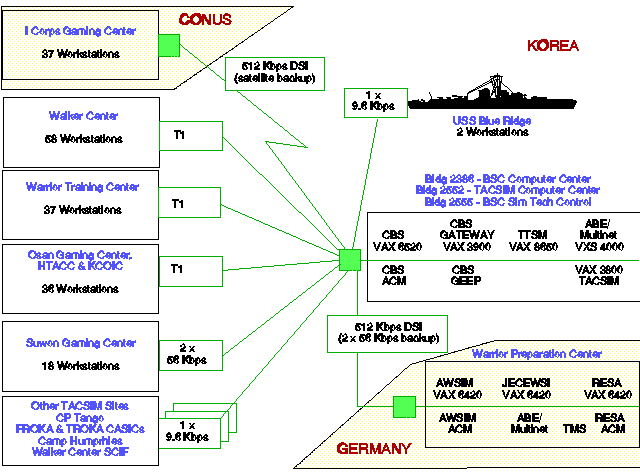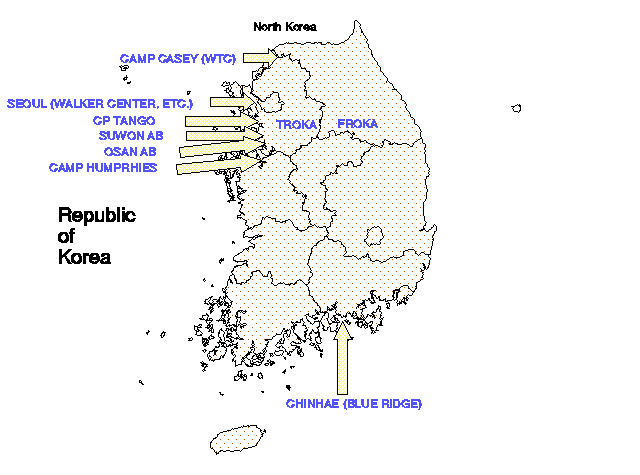
| Project Metadata | Keywords | |||||||||||||||||||||||||||||||||||||||||||||||||||||||||||||||||||||||||||||||||
|
|
I was the technical lead for a $9 million, two year project in Korea and the U.S. to design and build the Korean BSC, a prototype battle simulation center, a facility large enough to support division level training exercises on its own and containing the technology to enable links with other BSCs during major exercises. We integrated 11 simulations to support exercises. This project involved the use of the Aggregate Level Simulation Protocol (ALSP) to connect previously unrelated interactive simulations into a world-wide distributed simulation confederation for training. We built and maintained the simulation databases. We also operated the facility in order to define the proper procedures.
Challenge: The U.S. Forces Korea (USFK) needed a new simulation center to support its training needs. DSRD was tasked to design and integrate a prototype Korean Battle Simulation Center (KBSC) in which computer simulations would run to support training exercises for all levels of command and all missions. The KBSC would need to be large enough to support all but the largest exercises and it would need the communications connections to allow for distributed support for the largest exercises from overseas. Additionally, the diverse computer models currently in existence would need to be integrated to provide good training.
Accomplishment: DSRD designed the KBSC, installed the equipment, defined prototype operating procedures, staffed the KBSC, and operated it for a year to refine the designs. Included in the operation were the conduct of several large exercises, including Ulch Focus Lens (UFL). UFL required computer support and personnel on three continents: Asia, North America and Europe. Further, the exercise was distributed over several sites within Korea and required the use of the English and Korean languages. and allied exercises world-wide. The concept of a BSC with dual stand-alone and distributed capability has become the standard for major BSCs.
Technologies Employed: UFL was a major test of the integration of 11 computer models using the Aggregate Level Simulation Protocol (ALSP) and human mediated interfaces. Both the new Defense System Internet (DSI) and satellite communications were used to connect the sites around the world. The techniques were successful and are being used annually in three to five major U.S. and allied exercises world-wide.
Figure 1. Communications Links

Background: USFK and the Combined Forces Command (CFC), which includes USFK and the Republic of Korea (ROK) forces, have an ongoing need for training of many kinds. The most difficult kinds involve training commanders and their staffs because what makes their jobs difficult are the interactions among the troops they lead and between those troops and the enemy. Providing a realistic and challenging training environment includes the simulation of these interactions.
Figure 2. Gaming Locations in Korea

If you arrived here using a keyword shortcut, you may use your browser's "back" key to return to the keyword distribution page.
Return to Hartley's Projects Page